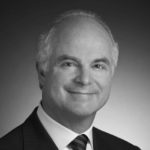& Donna Leong in Trusts & Estates Magazine
The odds are stacked against family business succession: Only a third of family companies survive their founders and, of these, only 10 percent make it to the third generation. As every major private bank is aware, much wealth can be squandered when business families fail not as leaders of significant enterprises, but as families.
While banks may understand the specialized nature of family enterprises—in which business, wealth, ownership and family are interdependent—their track record for delivering services that provide comprehensive solutions is mixed.
What’s wrong?
Private banks often are unrealistic about the organizational adjustments and recourses needed to succeed with these clients. They haven’t figured out how to offer customized business continuity and wealth management solutions that truly fit the complexities of multigenerational family enterprises.
Too often, private bankers fall back on canned trust structures, investment products and advisory services that the bank is familiar with, leaving clients with the impression that the bank’s goal is to sell them a pricey suite of services, regardless of whether it fits their fundamental needs.
While most successful private banks offer valuable services to their client families—wealth and investment advice, customized family office services, trust administration, estate planning and educational programs— they’re often delivered in a piecemeal manner that raises client expectations, but misses the mark. The family- oriented spin banks use to market themselves to wealthy families conveys sensitivity to the issues, but offers little substantive engagement with the particular complexities their clients face, something clients come to experience sooner or later as a disappointing misrepresentation.
To complicate matters further, many banks have cut back on these services since the 2008 financial crisis and have focused on what most view as their primary function—earning money for their clients. In many institutions, the transaction mentality has re-emerged with a vengeance at the expense of longer-term, qualitative services for family clients.
In the meantime, client expectations also shifted in the wake of the financial crisis. Many have become more skeptical of the reliability and trustworthiness of private banks in delivering results and protecting them from economic gyrations. Many clients have chosen to manage risk by building their own in-house solutions and establishing a family office of their own, adopting mechanisms such as private trust companies and buttressing the rigors of their existing governance structures.
Recruiting independent advisors for investment committees, as well as independent directors for their operating company boards, have become more common than ever before. Others chose to join multi-family offices that inherently understand families better and are thus more receptive to truly customizing the products and services they render.
Barriers to success
The first, and perhaps most important, constraint for banks is that their fundamental goals don’t always align with those of their clients. At times, banks nudge their clients to sell legacy businesses even though that’s not what the clients would otherwise prefer. Banks do so with the hope of enlarging their slice of the liquid assets that would result from the sale. As investors, many family business owners have weathered the recession much better with the operating companies that they own and manage themselves than with the diversified asset portfolios they hold with private banks. Ironically, the original impetus for the creation of these asset portfolios was precisely to diversify risk away from their operating companies—leading many to ask: What could we have done with those same assets had we kept them in our company?
Similarly, bankers quietly fear that by helping to strengthen their clients’ capacity to make independent strategic and investment decisions, they may lose direct influence over the client and, in the process, compromise the bank’s own interests.
Private banks aren’t always as forthcoming as they should be in advising their clients to formalize governance mechanisms that would enhance the clients’ continuity odds, such as upgrading boards and/or investment committees with high-caliber, independent directors or advisors.
What could be viewed as reticence in providing this guidance is more often than not a simple lack of expertise in what’s viewed, somewhat disparagingly, as the “soft side” of the client relationship. There’s also a lack of understanding of how effective governance practiced in a disciplined way by committed enterprising families sets the stage for their businesses and wealth to prosper. Yet, achieving that understanding would widen the range of opportunities for banks to serve their clients in a mutually beneficial manner in the long term.
Beyond these potential conflicts and misalignment of goals, there are also other barriers that can, and often do, interfere with the ability of private banks to effectively service the continuity needs of business families, including:
Costs. The initiatives required to help family business clients are often costly in terms of staff and financial resources and frequently yield returns that, while real, are hard to quantify in the short term.
For example, traditional measures of success, such as assets under management—typically used to drive internal compensation of relationship managers and wealth advisors—simply won’t translate when facilitating the implementation of an effective succession plan, designing an effective family council or adopting a helpful employment policy to regulate the family’s involvement with their operating business.
For many banks, it becomes too costly to have their professionals spend a disproportionate amount of time devoted to these concerns at the expense of selling trusts, financial products or estate plans, particularly when the return these services generate seems so much more tangible at the end of the budgetary cycle when bonuses are paid out.
Indeed, banks are often confronted with a dilemma. If they outsource these services to external providers, they risk foregoing their influence over the advice clients receive and the opportunity to enter the inner world of these families. Yet, if they deliver these services them- selves, they assume the costs and reputational risks that can be incurred when these transitions don’t go well.
The reality is that generational change will happen no matter what, and the clients’ (and the banks’) only real choice is whether they want to manage it. Of course, not all transitions go smoothly, even if clients and banks try to make them work. But focusing only on the downside risk, as many banks do, is a distortion and squanders the opportunities that carefully delivered continuity planning can offer. In fact, the risks are no different from any normal deal or transition in which all parties do their part, but factors uncontrollable by either side unravel the process.
Organizational constraints. Delivering integrative services effectively in a manner most useful to family business clients requires banks to work across traditional commercial, investment, wealth advising and trust departments that typically operate (or are required to operate, as in the case with trust departments with fiduciary responsibilities) independently from each other. In addition, retrofitting client needs into an existing line of proven products and services is never easy, further enhancing the organizational complications these services pose.
Selecting and developing relationship managers and wealth advisors with the right skills can become a significant hurdle for many banks (as it is for many consulting companies aspiring to move into this space). Banks know how to recruit, train and develop lawyers, MBAs and financial professionals. However, finding individuals who, in addition to having all the financial skills, can also understand and work with families, is significantly more challenging because these are skills banks don’t typically require of professionals.
Over the years, we’ve often been surprised with how wide the gap is between what bankers (even very sophisticated ones who pride themselves on the quality of their client relationships) think they know about their clients and what’s actually going on in these families. Even if they’re aware of what’s happening with the family, relationship managers and wealth advisors often lack the skill set to help. Moreover, banks typically lack the resources to support their relationship managers, even when they’re willing and able to help, thus forcing them to stick to what they know best and what’s measureable.
Surprisingly, even the most basic demographic facts about their family clients (often the best tangible predictors of succession timing and of continuity risks) often aren’t systematically tracked in any meaningful manner. As a result, many banks ignore the percentage of their family client portfolios that are approaching critical generational transition years.
Having the data, of course, is only half of the story. Banks also need individuals capable of interpreting the information and turning it into useful interventions that add value to the families, wealth and businesses of their clients.
Staff turnover. Turnover of wealth advisors and relationship managers often undermines the effective rendering of continuity planning services. In some cases, particularly since the 2008 crisis, the constant rotation and the limited process of hand-off from one relationship manager to another is so flawed that it’s the clients who become the institutional memory for the bank, reminding the bankers about the particulars of their accounts and trusts, as well as the initiatives and products that might have been unsuccessfully tried before.
To be clear, we don’t intend to convey that private banks have no role to play in servicing business families. They do. The point is that if they choose to operate in this space, they must be aware of the potential conflicts that may arise and the conditions necessary to succeed.
Determinants of Success
Venturing into family office services cuts both ways. When it’s done well, with the clients’ long-term interests and their fundamental values and goals in mind, these services can greatly enhance loyalty and promote the kind of reciprocity that reinforces lasting and mutually beneficial relationships.
These client families unquestionably need all the assistance they can get negotiating generational transitions, and their trusted bankers are often in a position to help them improve the odds. However, if done poorly, venturing into this space can breed cynicism among clients and convey a sense that the bank’s interest in the family is merely a marketing ploy. Moreover, performing this work poorly actually hurts the bank’s brand and erodes trust and client loyalty.
Over the years, we’ve tracked some of the key ingredients that need to be in place for banks to have a reason- able chance of succeeding in the family business space.
These include:
A CEO who “gets it.” Since family continuity/office services often fall outside of the typical suite of private banking activities, they require unwavering support from the leadership to be deployed effectively. CEOs who succeed view these services as an integral part of the broader strategy. Unless the CEO understands the needs of clients and develops a comprehensive strategy to deliver these services in an integrated and sustained manner, it’s probably best not to start down this path.
Successful execution requires a clear signal from the top that the continuity needs of client families are integral to the bank’s long-term success. Key to executing this well is building a culture that fosters sensitivity to client families and a commitment to assisting them with their continuity and succession issues.
Moreover, effective CEOs explicitly model a personal interest on family enterprise—they take the time to appreciate the unique strengths and vulnerabilities of these remarkable businesses and of the families that built them; they actively promote the importance of enhancing expertise and capacity in family enterprise issues; they invest in educating themselves and reward their direct reports who do so; and they appreciate the interaction among continuity, estate, strategic and succession planning and reward wealth advisors who take the time to become competent on these issues. Above all, they listen attentively to their clients and recruit their help in educating their bankers about how critical these issues are. Some bank CEOs foster on-going systematic research on family enterprise issues and use the findings to customize educational opportunities for both bankers and clients. In so doing, they help legitimize that these issues are essential for sustaining meaningful long-term relationships with their clients—and not simply a marketing fad.
Enhanced diagnostic and client tracking capacity. Banks should train wealth advisors to gather data in a more systematic and structured way. Relationship managers need to be taught the right diagnostic questions to ask clients and to develop the tools and know- how to understand the implications of the information they gather.
Often the most important information is sensitive and hard to get, given the bankers’ psychological contract with their clients. It’s important to ask permission and explain why the information is relevant to the bankers’ work. Bankers must also learn to capture information in unobtrusive ways.
Clients are always guarded about sharing information about their families. This is particularly true in cultures in which the boundaries of the family are tight and privacy is held at a premium. However, when approached in the right way, families often welcome the opportunity to share their issues and get help with dilemmas. This is particularly so if bankers are able to show in an empathic manner that many of the thorniest issues are, in fact, quite generic and shared by all business families.
Enhancing the capacity of bankers to understand business families and innovative products that reflect the particulars of this market is also critical. For example, beyond traditional family office services, much more could be done to help business families address their liquidity needs, establish stock redemption policies and funds or stimulate familial entrepreneurship in the next generation through carefully administered venture capital funds. Similarly, banks can help families develop and manage “safety-net funds” that can assure a minimum standard of health, education and housing for future generations.
Enhanced educational opportunities for clients and bankers. Bankers can be very helpful in convening educational events that bring together families who are at similar stages of business ownership development. These gatherings can serve as efficient opportunities for bankers to learn more about members of client families with whom they don’t typically interact and to embrace the notion of the entire family being their clients (not just the individuals who control the assets under management). Viewing the whole family as the client also increases the chances of continuity from the point of view of the bank relationship. This is often a concern of private banks when the lead person with whom they have exclusively dealt over the years gets ready to step aside. Often, the exit of the lead person in the relationship throws the bank into panic mode in its attempt to continue a relationship with the remaining family members. But, by then, it’s often too late to salvage it.
Banks that organize effective educational programs refrain from treating them as one-time events. Instead, they develop a lifelong learning curriculum and convey to their clients that while continuity should always be thought of as a choice, the bank is offering a lifetime of learning to manage the myriad of dilemmas that come with having a family enterprise.
Developing an ongoing curriculum of targeted workshops on relevant issues such as building an effective board of directors, managing leadership transitions and developing family philanthropy is helpful. Banks can use these events to expose their relationship managers to the issues clients face. They can then hold training seminars for the bankers to discuss among themselves the implications of what they’ve learned from clients. Too often, banks invest in educating their clients, but their staff lags behind on the learning curve.
By investing in educating themselves and their clients, banks deploy the best antidote to the downside risk of clients derailing as they attempt to tackle generational transitions.
Walk the talk. As we mentioned, banks that want to succeed in the family advisory/office space should develop services that are truly integrative and customized to the realities of business and wealthy families.
Clients should be serviced through multidisciplinary teams that bring together all the relevant skills, including: strategic and investment know-how; estate and wealth management expertise; and an understanding of the fundamental ideas of family enterprise. A senior banker should service each client relationship. The banker should function both as internal team leader and as the trusted advisor who connects directly to the family leadership. A junior wealth advisor on each team can be assigned to the next generation and would serve to bridge the client relationship with the rest of the team when targeted expertise is required on such issues as estate planning, investment and trusts, which represent a cross section of the functional areas of the bank.
The overarching purpose of the teams should be to assist clients in managing the growth and continuity of their wealth in ways that are in service to the developmental needs of their families, so the focus is not solely on making more money, but on leading better lives.
Naturally for all this to work, a minimum of stability in the relationships is required long term. Moreover, the service needs to be integrative and holistic, meaning it should be conceptualized, marketed and delivered in a way that honors the interdependence among family, business/financial and ownership/legal issues. In other words, the service should acknowledge that the client’s world and experience aren’t compartmentalized in accordance with disciplinary boundaries nor the existing organizational structures of banks.
The family enterprise market worldwide is enormous and offers great opportunities for banks to make a real contribution. Taking advantage of these opportunities calls for a serious understanding of how best to respond to client needs.
Donna Leong has more than 20 years’ experience in the private banking field and was formerly head of Family Wealth Advisory at HSBC Private Bank.
Source: Trusts & Estates Magazine, May 2013
Copyright © 2013. Trust & Estates magazine. Subject to the provisions of the Terms and Conditions of the Trust & Estates Web Site, subscribers to Trust & Estates magazine may print and distribute copies of this article, electronically or otherwise, provided that (a) such printing and distribution is done only for your personal, informational, non-commercial purposes, and (b) you do not remove or obscure the copyright notice or other notices. For other uses, including reprint permission for non-subscribers, contact Trust & Estates magazine.








